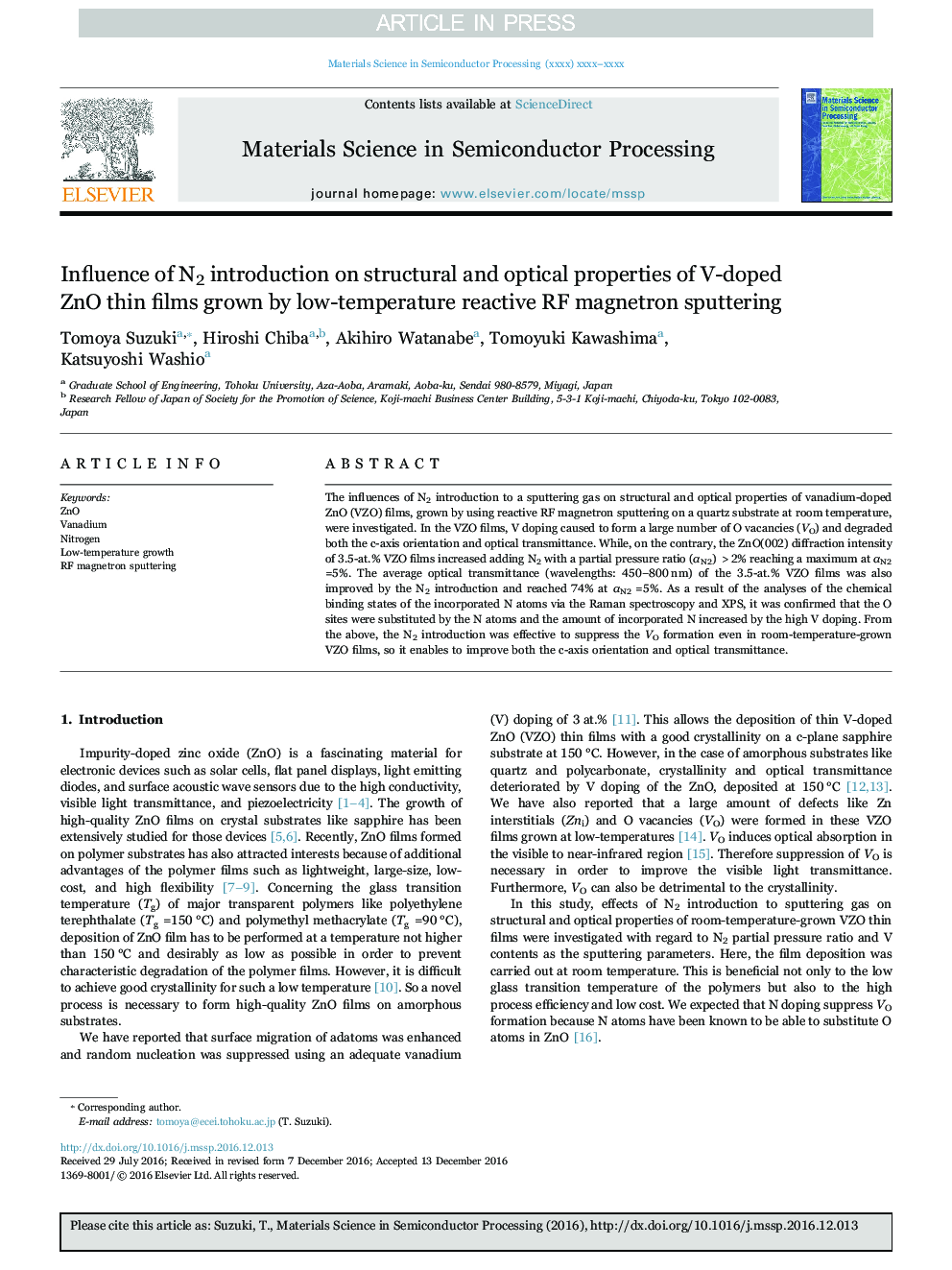| Article ID | Journal | Published Year | Pages | File Type |
|---|---|---|---|---|
| 5005909 | Materials Science in Semiconductor Processing | 2017 | 6 Pages |
Abstract
The influences of N2 introduction to a sputtering gas on structural and optical properties of vanadium-doped ZnO (VZO) films, grown by using reactive RF magnetron sputtering on a quartz substrate at room temperature, were investigated. In the VZO films, V doping caused to form a large number of O vacancies (VO) and degraded both the c-axis orientation and optical transmittance. While, on the contrary, the ZnO(002) diffraction intensity of 3.5-at.% VZO films increased adding N2 with a partial pressure ratio (αN2) >2% reaching a maximum at αN2 =5%. The average optical transmittance (wavelengths: 450â800 nm) of the 3.5-at.% VZO films was also improved by the N2 introduction and reached 74% at αN2 =5%. As a result of the analyses of the chemical binding states of the incorporated N atoms via the Raman spectroscopy and XPS, it was confirmed that the O sites were substituted by the N atoms and the amount of incorporated N increased by the high V doping. From the above, the N2 introduction was effective to suppress the VO formation even in room-temperature-grown VZO films, so it enables to improve both the c-axis orientation and optical transmittance.
Related Topics
Physical Sciences and Engineering
Engineering
Electrical and Electronic Engineering
Authors
Tomoya Suzuki, Hiroshi Chiba, Akihiro Watanabe, Tomoyuki Kawashima, Katsuyoshi Washio,
